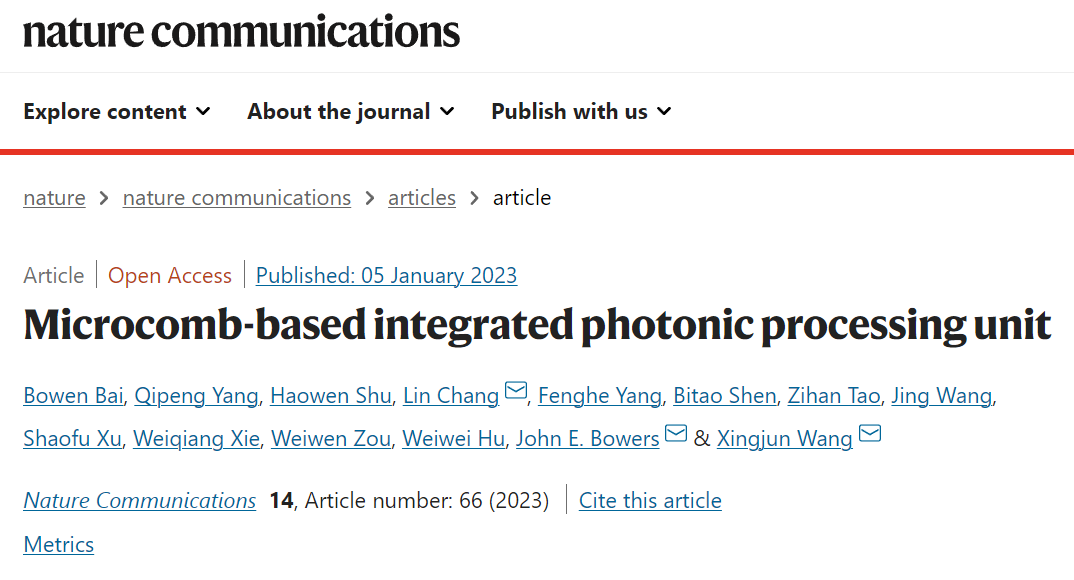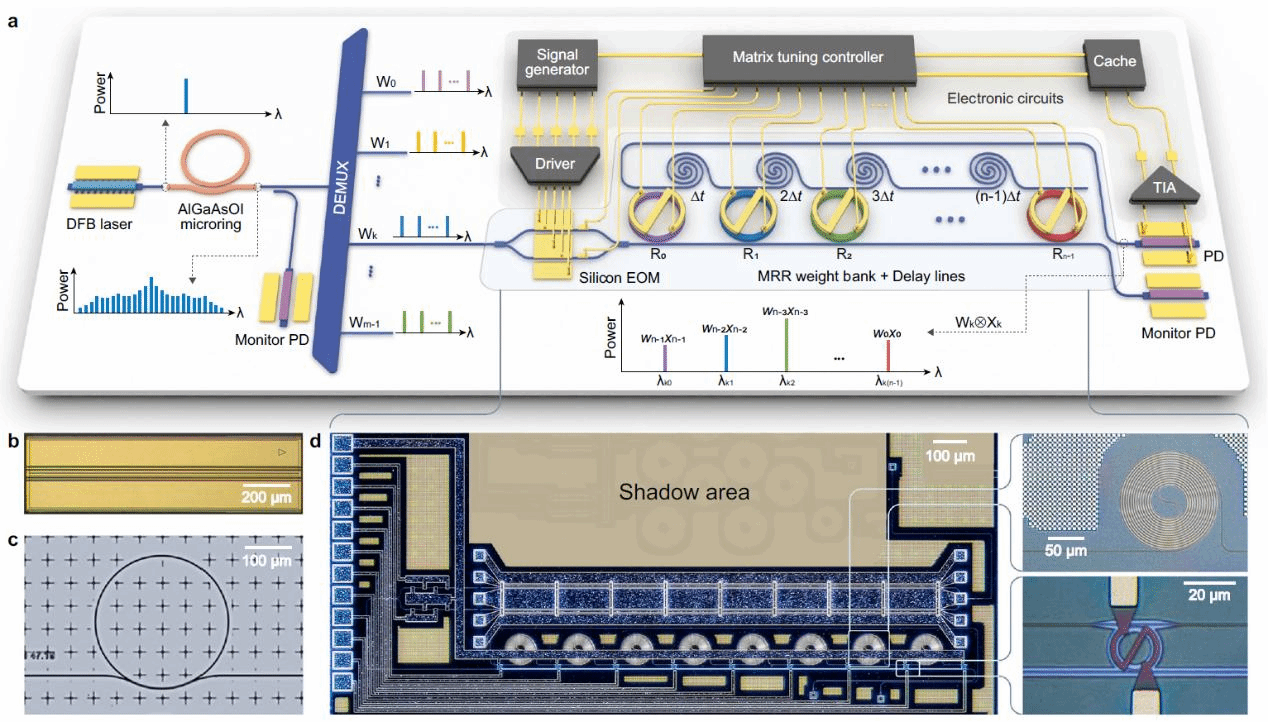On January 5th, 2023, the Xingjun Wang and Lin Chang research groups from the School of Electronics published an article titled "Microcomb-based Integrated Photonic Processing Unit" online in Nature Communications. The article reports, for the first time, a silicon-based integrated photonic processor with a preeminent computing density for neural networks. The research team spent three years overcoming two global technical challenges: calibration of multi-wavelength parallel optical computing systems and ultra-high precision weight control.

Artificial Intelligence (AI) technology has been widely applied in data-intensive computing tasks. In the post-Moore era, photonic neural networks have emerged to meet the huge demand for AI computing power and energy consumption. Basic mathematical operations such as matrix multiplication and convolution in neural networks can be achieved using photons in specific optical structures. Thanks to the natural advantages of ultra-high-speed, wide bandwidth, and low energy consumption of photons, computing speed and energy efficiency are significantly improved. In recent years, photonic neural networks have been realized through mature optoelectronic integration platforms. Due to their small size, scalability, and low energy consumption, this new type of photonic processing unit is expected to break through the computing power and energy efficiency bottlenecks of microelectronic processors and fundamentally change the hardware deployment of artificial intelligence.
To further tap into the potential of optical computing, photonic neural networks need to enhance their computing throughput through parallel processing. Introducing wavelength-division multiplexing into photonic neural networks is an effective method. However, this advanced computing architecture faces significant challenges in integration. Apart from the difficulty in integrating multi-wavelength light sources, another critical issue is that multi-wavelength photonic neural networks are more complex than single-wavelength schemes, requiring more precise calibration methods and more effective control measures. Therefore, chip integration has long been a bottleneck restricting the development of parallel photonic neural networks, hindering the promotion and popularization of related technologies.

In this work, the research teams developed a silicon-based integrated photonic processor consisting of a multi-wavelength light source, high-speed data loading/receiving unit, and computing core. The calibration method developed for multi-wavelength computing systems can accurately control the various optoelectronic devices, laying the foundation for the current highest weight precision (9 bits). Thanks to the extremely high integration and ultra-high-speed information loading/receiving rate, the computing density of this optoelectronic processor reaches up to 1.04 TOPS/mm2. In image edge detection and handwritten digit recognition test tasks, the edge detection quality and recognition accuracy (96.6%) are comparable to electronic computers (97.0%). This work points the way for the implementation of fully integrated multi-wavelength optical computing systems and is expected to provide new solutions for breaking through computing power in the entire artificial intelligence field in the future.
The co-first authors of this paper are Bai Bowen, a Boya postdoctoral fellow at the School of Electronics, Yang Qipeng, a 2020 Ph.D. student, Shu Haowen, a Boya postdoctoral fellow, and Assistant Professor Chang Lin. Professor Wang Xingjun from the School of Electronics, Professor John E. Bowers from the University of California, Santa Barbara, and Assistant Professor Chang Lin from the School of Electronics are the corresponding authors of the paper. Major collaborators also include Professor Zou Weiwen from Shanghai Jiao Tong University, Associate Researcher Yang Fenghe from Zhangjiang Laboratory, Dr. Xie Weiqiang from the University of California, Santa Barbara (currently an Associate Professor at Shanghai Jiao Tong University), Professor Hu Weiwei from the School of Electronics, Shen Bitao, a 2019 Ph.D. student, and Tao Zihan, a 2020 Ph.D. student.




